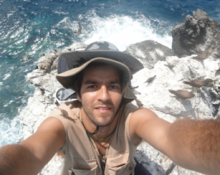Intraspecific variability in highly mobile organisms: which mechanisms promote seabird diversity?

Guilherme Tavares Nunes
Universidade Federal do Rio Grande do Sul; Centro de Estudos Costeiros, Limnológicos e Marinhos; Imbé, RS, Brazil,gtnbiomar@gmail.com
Evolution of marine organisms is strongly influenced by the seascape heterogeneity in distinct spatial scales. Ocean circulation and variations in physicochemical characteristics of water masses can represent bridges and barriers to gene flow at the same time, playing an important role toward intraspecific variability and speciation. Nonetheless, highly mobile organisms, such as seabirds, can easily overcome such barriers and show differentiation even between nearly located breeding sites, shedding light in additional factors promoting variability in this group. Based on my research, I will provide on overview about seabird evolution and the mechanisms that influence gene flow in the group, with special focus on tropical seabirds.
Recent publications:
1 Nunes GT, Mancini L, Bugoni L. 2017. When Bergmann’s rule fails: evidences of environmental selection pressures shaping phenotypic diversification in a widespread seabird. Ecography 40: 365–375
2 Nunes GT, Bugoni L. 2018. Local adaptation drives population isolation in a tropical seabird. Journal of Biogeography 45:332–341.
3 Nunes, GT, Bertrand, S, Bugoni L. 2018. Seabirds fighting for land: phenotypic consequences of breeding area constraints at a small remote archipelago. Scientific Reports 8: 665


